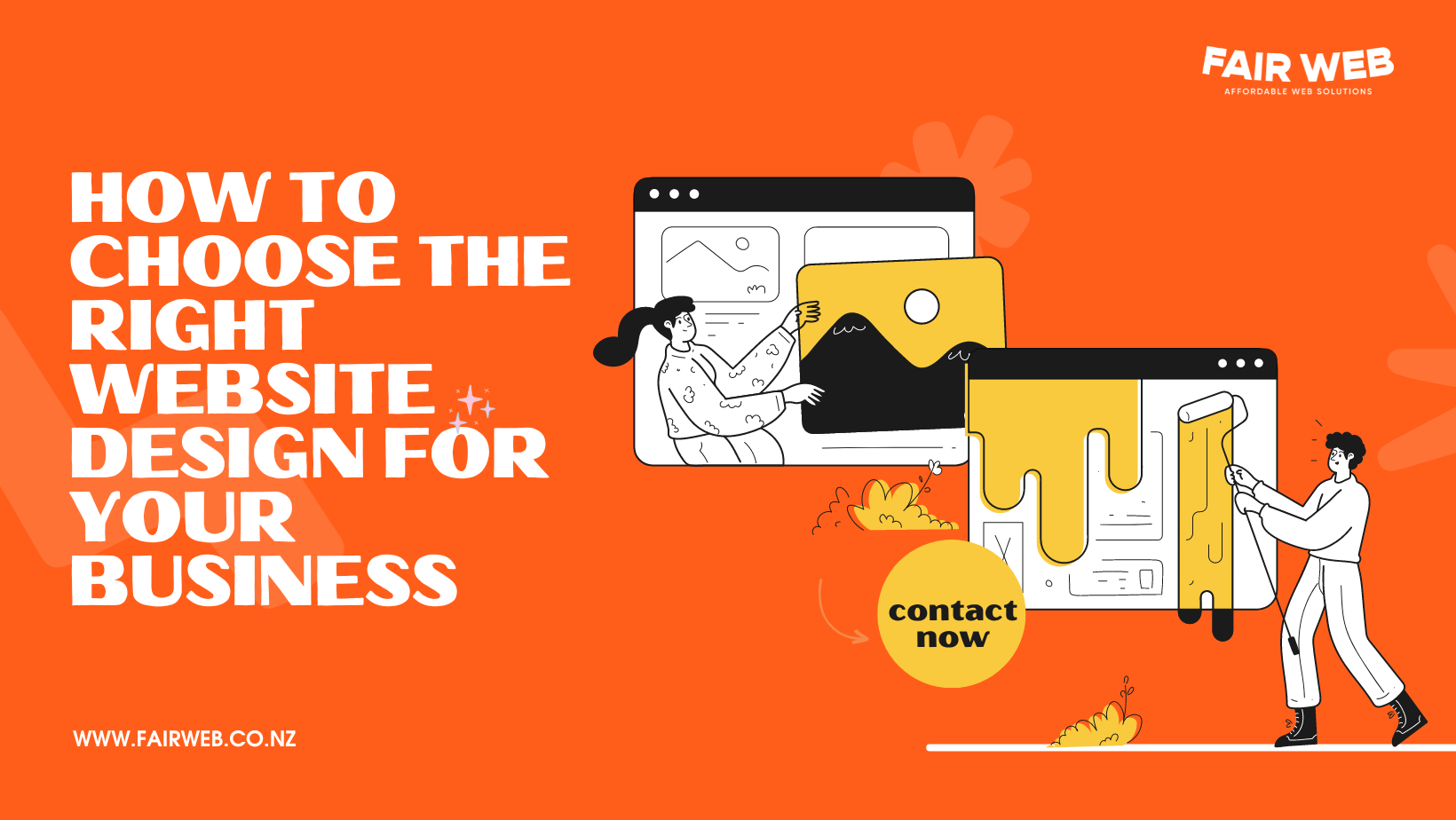Your website is the digital face of your business, making the design you choose critically important. A well-designed website can drive traffic, convert visitors into customers, and enhance your brand’s credibility. But with so many options out there, how do you choose the right website design for your business? At FairWeb, we help clients navigate these decisions every day. Here’s a guide to help you make the right choice.
1. Understand Your Business Goals
Before diving into website design, it’s crucial to understand what you want your website to achieve. Are you looking to sell products online, generate leads, or simply provide information about your services? Your business goals should drive the design process. An e-commerce site, for example, will have different design needs than a service-based website. Clarifying your goals early on ensures that your website supports your business’s objectives.
2. Know Your Audience
A successful website isn’t just about aesthetics; it’s about user experience. Your design should cater to the preferences and behaviors of your target audience. If your audience is tech-savvy, for instance, you might opt for a modern, interactive design. If your customers are older or less familiar with technology, simplicity and ease of navigation become more important. Always design with your users in mind.
3. Choose Between Custom and Template Designs
When it comes to website design, you have two main options: custom-built sites or pre-made templates. Templates are cost-effective and can be set up quickly, but they offer limited customization and may not stand out from competitors. Custom websites, on the other hand, are built from scratch to meet your specific needs, offering greater flexibility, scalability, and branding opportunities. FairWeb specializes in custom website design, ensuring your site is unique to your brand.
4. Mobile Responsiveness is Key
With more users browsing on mobile devices, it’s essential that your website is fully responsive. A mobile-responsive design adapts seamlessly to different screen sizes, ensuring your visitors have a smooth experience no matter how they access your site. Google also favors mobile-friendly websites, which can improve your search engine ranking.
5. Focus on SEO
Your website’s design can have a major impact on your SEO (search engine optimization). Factors like page speed, mobile-friendliness, and clean code all affect how search engines rank your site. A well-designed website built with SEO in mind will help you attract organic traffic and improve visibility. At FairWeb, we ensure that SEO best practices are integrated into every design.
6. Prioritize Security
Security is another critical aspect of website design. If your site handles sensitive customer data or transactions, you need robust security measures in place. SSL certificates, secure hosting, and regular updates are all key to keeping your site safe. Choosing a web design team that prioritizes security can protect your business and build trust with your customers.
7. Consider Future Growth
As your business grows, so should your website. Make sure the design you choose allows for scalability. This means it should be easy to add new content, pages, or features as your business evolves. A website that can grow with you is a long-term investment in your business’s success.
Conclusion
Choosing the right website design for your business requires careful consideration of your goals, audience, and future needs. At FairWeb, we create custom websites that not only look great but are built to support your business’s growth. Whether you’re starting from scratch or looking to revamp an existing site, we’re here to help you create a website that drives results.
